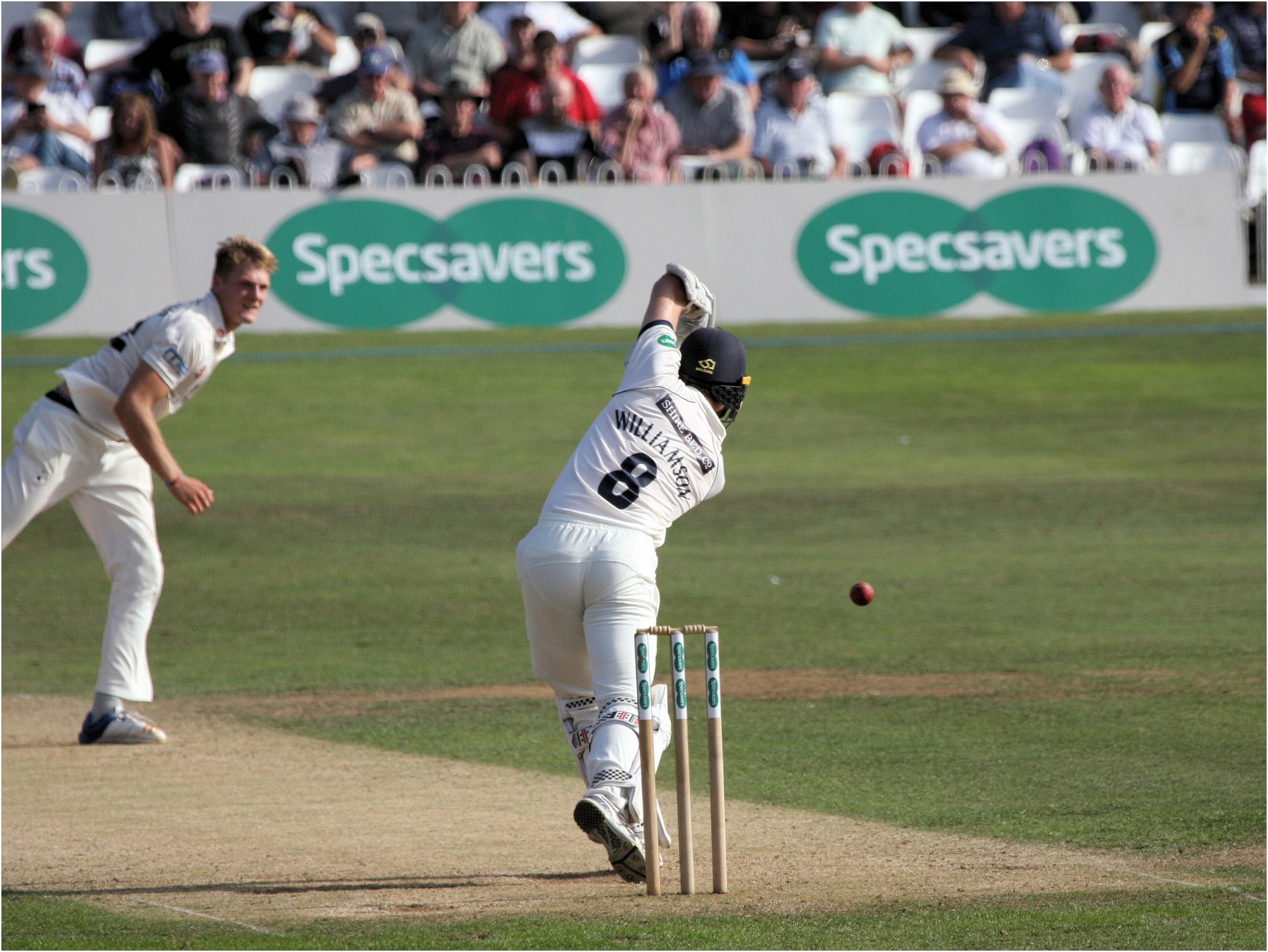The purity of Test cricket and the five day game was once sacrosanct and untouchable. Domestic cricket had been reaping the benefits of the one day game since the early 60s, but it took almost 10 years to infiltrate the international game. The 50-over format slipped quietly into the calendar and took its formal bow when the World Cup was first staged in 1975. T20 cricket arrived on the international scene in 2005 – two years after the domestic game had embraced the quick and easy thrill of 20 overs.
In the early days, ODIs peacefully co-existed with the Test programme; team selection was identical and the captain remained the same. The introduction of T20 stretched resources still further as the lucrative nature of limited overs proved an irresistible magnet. Specialists have gradually emerged in each format and many players have concentrated on either the red ball or white ball game. However, there is an elite band of batsman who have played across all formats and achieved what should be impossible.
When Dawid Malan scored 125 against the Netherlands in June 2022 he became only the second England batsman after Jos Buttler to score a century in all formats of the game. They are among twenty players to have completed the full set since T20 was added to the international roster in 2005. Both have sporadically appeared in Test matches and now seem to be gravitating towards the white ball game.
Buttler is firmly established as one day captain and presided over a glorious victory in the T20 World Cup against Pakistan. He also doubles up as wicketkeeper which makes this particular landmark even more impressive. The Somerset lad has taken 389 catches and scored 13 centuries in the international arena. Malan’s Test career has been fitful and inconsistent with his only Test century coming against Australia in the 2017-18 Ashes series. The South African-raised opening batsman discovered a natural affinity with the one day game, especially T20 where he has scored 14 half centuries at an average of 38.
Like many in this group of unique achievers, Buttler made his debut in the one day game before appearing at Test level. It becomes the theatrical equivalent to playing the fringe before graduating to the West End stage. It can be a daunting experience even for the most talented of players. They find varying levels of success and a natural preference is dictated by form and circumstance. Rohit Sharma of India made his one day debut in 2007, but had to wait six years before entering the Test arena. With a Test average of 46 and an ODI equivalent of 48 he shows real adaptability across all formats. In contrast, Glenn Maxwell struggled to establish himself in Test cricket while excelling in the one dayers. The Aussie all-rounder was selected for the tour of India in 2012-13 but failed to impress with bat and ball. He won periodic recalls when injuries and suspensions forced the selectors’ hand. But seven Tests spread over four years have produced a meagre average of 26 with his only Test century coming against India.
Maxwell’s problem, like many white ball specialists, is the degree of concentration required for Test cricket. The tendency to swing the bat and break periods of inactivity doesn’t always lend itself to the long form. The violent chess of Test cricket naturally clashes with the slugfest of limited overs. But for some batsman the perceived dilemma becomes gloriously irrelevant. A heady mix of talent, confidence and raw nerve will see some players through.
Gayle Force is a predictable though apt nickname for Chris Gayle of the West Indies. Seeing no need to ponder or play himself in, he was an instinctive one day player who flourished in a moderate West Indian Test side. His debut against Zimbabwe in 2000 was the first of 103 tests where he averaged 42 and scored 15 centuries. Gayle also hit a whopping 333 against Sri Lanka in 2010. It came in only 437 balls and included 43 boundaries at a strike rate of 76.20. By anyone’s standards they are jaw dropping figures in a test match; and he continued in much the same vein with the one day game. A 20 year career in ODI has placed him eighth in the all-time list of century scorers with a top score of 215 and an average of 37. Typically Gayle also holds the all-time ODI record of 331 sixes. Strangely, his record in T20 internationals is solid but not quite as spectacular (at least where he’s concerned) with a top score of 117.
David Warner has attained a similar level of consistency across all three formats. The Australian opener made his international debut in 2009 and thirteen years later his career is still going strong; he needs three more test caps and one more T20 match to have made 100 appearances in each format. However, controversy stalks Warner as surely as morning follows night. He is regularly embroiled in spats with players, umpires and spectators; but most notably was suspended in 2018 for bringing the game into disrepute and permanently barred form leadership positions. In spite of these distractions his figures are terrifyingly impressive. A knock of 335 not out against Pakistan is the second highest score by an Australian in Test cricket. A Test and ODI average in the mid-forties and a T20 average of 32 stand testament to an outstanding talent.
One player who surprisingly failed to reach this milestone is Australian opener Aaron Finch. A bonafide legend in limited overs and captain of both the ODI and T20 sides, he just couldn’t cut it at Test level. Finch has scored 19 centuries against the white ball including an astonishing knock of 172 against Zimbabwe in T20s. Such form earned him a call up in the Test series against Pakistan and India. However, he failed to sufficiently adjust his style and made only 5 Test appearances recording an average score of just 27.
Another notable absentee is England’s talismanic captain Ben Stokes. He scores centuries for fun in Test matches and ODIs, but has not surpassed the match winning 52 not out in England’s T20 World Cup victory over Pakistan. When appointed as Test captain, Stokes announced he would step back from the white ball game. But he is so often England’s Johnny on the Spot that it must only a matter of time before he cracks it? One would also be forgiven for thinking that white ball specialist Eoin Morgan has long since turned the trick, but annoyingly has fallen nine runs short of ticking this box. He registered two Test centuries coupled with 14 centuries in ODIs. However, in 115 T20 internationals Morgan could muster nothing greater than 91.
It is perhaps surprising that 20 batsmen have already reached this heady status. The toughest nut to crack is probably the century in T20, which even using the most conservative estimate must be completed in around 60 balls. Sachin Tendulkar, Ricky Ponting and Abe de Villiers are among the legends of the game who have fallen short of this distinction. It proves that the multi format evolution of the game has created an increasingly different and troublesome sub-species.
Brian Penn









No mention of the 16.6, Brian ? !!!
Not played internationally 😉
Very good !
Was watching the 1st day of the Australia v South Africa test and found it depressing in retrospect. The Aussie bowlers didn’t have to do much as the woeful technique of the Pretorians did it for them. Movement of the feet, or lack of it, seems to be the white ball batting legacy. Stick your foot down the line of off stump and waft the bat. At the end of the day Australia lost their wicket in exactly the same way. Coaching is appalling. These are experienced pros and yet have so many basic weaknesses it’s a wonder anyone makes test hundreds any more.
Nice read. Might have been worth a mention in passing for Heather Knight, the only woman of any nationality to have achieved this feat? Granted, you refer to “batsmen” (and I’m not here to bang the ‘batters’ drum, at least not on this occasion), but given the dearth of Tests for women her unique achievement ought to be acknowledged.
Interesting article with lots of information.